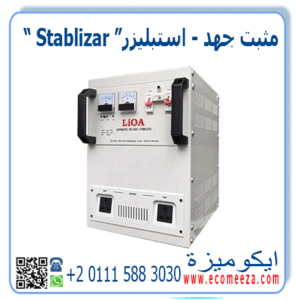اقسام المنتجات
the difference between alternating current and direct current
Alternating Current (AC) vs. Direct Current (DC)
Alternating Current (AC) vs. Direct Current (DC)
Electricity, a crucial part of our daily lives, powers everything from our homes to our mobile devices. It primarily flows in two forms: Alternating Current (AC) and Direct Current (DC). Understanding the difference between these types of current is essential for grasping how different devices function, as well as the advantages and limitations of each in specific applications.

1. Definition and Flow Characteristics
Direct Current (DC):
Direct current flows in a single, unchanging direction, making it a unidirectional flow of electric charge. With DC, the electrons move steadily from the negative end of a circuit to the positive end, maintaining a constant voltage and polarity. DC is typically generated by batteries, solar cells, and fuel cells.
Alternating Current (AC):
In alternating current, the flow of electric charge periodically reverses direction. AC cycles through positive and negative voltage values, usually represented as a sine wave. The most common form of AC used worldwide has a frequency of either 50 Hz or 60 Hz, meaning the current reverses direction 50 or 60 times per second. This form of current is generated by power stations and is the standard for most of the world’s electrical power supply.
2. Voltage and Frequency
DC Voltage:
In DC circuits, voltage remains constant over time, providing a steady flow of current. This stability makes it suitable for electronic devices sensitive to voltage fluctuations, like laptops and mobile phones.AC Voltage:
AC voltage alternates over time, fluctuating between positive and negative values, typically following a sinusoidal waveform. This characteristic allows for easy transformation of voltage levels, making AC ideal for long-distance power transmission.
3. Generation
Generating DC:
Direct current is generated by devices like batteries, solar cells, and DC generators. Each of these sources provides a stable voltage output, making them suitable for low-power applications. In large-scale power applications, DC generation can be more complex and costly due to the need for specialized equipment.Generating AC:
Alternating current is generated by rotating generators in power stations. The rotation of coils in a magnetic field induces a voltage that naturally oscillates, creating an alternating pattern. AC is generally more economical to produce in large quantities and is used worldwide in power grids.
4. Transmission and Distribution
One of the most significant differences between AC and DC lies in how efficiently they can be transmitted over long distances.
DC Transmission:
Direct current can be difficult to transmit over long distances because it requires more infrastructure and suffers from energy losses. High-voltage DC (HVDC) transmission lines are used for specific applications, especially underwater cables and long-distance transmissions, where they minimize losses compared to AC transmission.AC Transmission:
Alternating current is easier and cheaper to transmit over long distances, thanks to transformers. By stepping up AC voltage, power can be transmitted with reduced losses and then stepped down for local distribution. This is why AC is primarily used in power grids across the world.
5. Conversion Between AC and DC
In many devices, especially electronics, DC is required for operation. However, because most power is supplied as AC, conversion is necessary.
AC to DC Conversion (Rectification):
Rectifiers, such as diodes and bridge rectifiers, convert AC into DC. This process is essential in electronics that rely on a steady DC voltage, like computers, smartphones, and LED lighting.DC to AC Conversion (Inversion):
Inverters perform the opposite task, converting DC into AC. They are used in applications like solar power systems, where solar panels generate DC power, but household appliances need AC. Inverters are also critical in uninterruptible power supplies (UPS) for backup power.
6. Applications and Use Cases
Direct Current (DC) Applications:
- Electronics: DC is ideal for small, low-voltage applications that require stable power, like mobile devices, laptops, and portable electronics.
- Electric Vehicles (EVs): EV batteries use DC, requiring charging stations to convert AC from the grid to DC.
- Renewable Energy: Solar panels generate DC, which is then converted to AC for household use or stored in batteries.
Alternating Current (AC) Applications:
- Residential and Commercial Power Supply: Most homes and industries are powered by AC due to its efficient transmission over distances.
- Large Appliances: Motors and heavy machinery typically run on AC.
- Lighting and HVAC Systems: AC is used in most residential and commercial lighting and heating/cooling systems.
7. Advantages and Disadvantages
Advantages of DC:
- Stable Voltage: Suitable for sensitive electronics that require constant voltage.
- Efficient Storage: Easier to store energy in batteries, making it useful in portable and backup power applications.
- Low Power Loss in Short Distance Transmission: Ideal for low-power applications over short distances.
Disadvantages of DC:
- Expensive Transmission: High costs and infrastructure complexity for long-distance DC transmission.
- Limited Application in Power Grids: DC is less compatible with the existing AC infrastructure in most power grids.
Advantages of AC:
- Efficient Long-Distance Transmission: Can be transformed to high voltages, reducing energy loss over distance.
- Easy Voltage Transformation: AC allows for simple and efficient voltage adjustments, ideal for residential and industrial needs.
- Widely Supported Infrastructure: Most electrical infrastructure is built around AC, making it accessible and economical for general power distribution.
Disadvantages of AC:
- Not Suitable for Direct Use in Electronics: Many devices need AC to be converted to DC before use.
- Potential Safety Hazards: High-voltage AC can pose increased risks of electric shock and injury if not managed properly.
Conclusion
While AC is the backbone of modern power distribution systems due to its efficiency in transmission and versatility, DC remains indispensable for specific applications, especially in electronics and renewable energy. The need for both AC and DC currents continues to grow, and with technological advances, especially in energy storage and power conversion, both types of current will play essential roles in meeting the world’s future energy demands.


